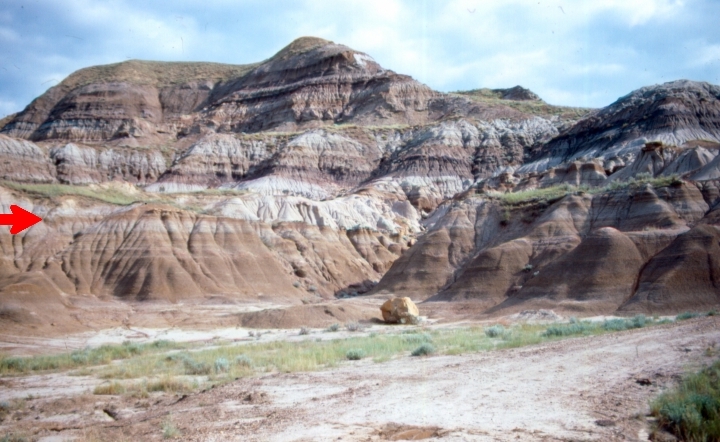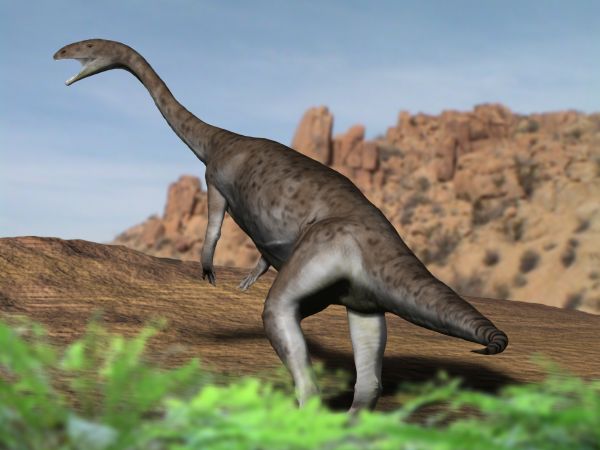|
List Of Stratigraphic Units With Ornithischian Tracks
Indeterminate or unspecified ornithischian tracks Ceratopsians Ornithopods Thyreophorans Ankylosaurs Stegosaurs See also List of dinosaur-bearing rock formations This list of dinosaur-bearing rock formations is a list of geologic formations in which dinosaur fossils have been documented. Containing body fossils * List of stratigraphic units with dinosaur body fossils ** List of stratigraphic units with ... Footnotes References * Weishampel, David B.; Dodson, Peter; and Osmólska, Halszka (eds.): The Dinosauria, 2nd, Berkeley: University of California Press. 861 pp. . {{DEFAULTSORT:List Of Stratigraphic Units With Ornithischian Tracks Ornithischian tracks Dinosaur trace fossils Ornithischians ... [...More Info...] [...Related Items...] OR: [Wikipedia] [Google] [Baidu] |
Abu Agag Formation
The Abu Agag Formation is a Turonian geologic formation in Egypt and Sudan. Indeterminate fossil ornithischian tracks have been reported from the formation.Weishampel, et al. (2004). "Dinosaur distribution." Pp. 517-607 Description The formation comprises intercalated sandstones and highly bioturbated sand- and siltstone layers which are horizontal and wavy bedded. Horizontally laminated and thin bedded fine-grained sandstones as well as flaser- and ripple cross-lamination characterize a low-energy environment within this fluvial succession. Fossil content The following fossils have been reported from the formation: at .org * '' [...More Info...] [...Related Items...] OR: [Wikipedia] [Google] [Baidu] |
Mist Mountain Formation
The Mist Mountain Formation is a geologic formation of latest Jurassic to earliest Cretaceous age in the Western Canada Sedimentary Basin that is present in the southern and central Canadian Rockies. It was named for outcrops along the western spur of Mist Mountain in Alberta by D.W. Gibson in 1979. The Mist Mountain Formation contains economically important coal seams that have been mined in southeastern British Columbia and southwestern Alberta.Gibson, D.W. 1979. The Morrissey and Mist Mountain formations - newly described lithostratigraphic units of the Jura-Cretaceous Kootenay Group, Alberta and British Columbia. Bulletin of Canadian Petroleum Geology 27: 183-208. Lithology The Mist Mountain Formation consists of interbedded light to dark grey siltstone, silty shale, mudstone, and sandstone, with localized occurrences of chert- and quartzite-pebble conglomerate and conglomeratic sandstone, as well as a series of economically important coal seams.Glass, D.J. (editor) 1 ... [...More Info...] [...Related Items...] OR: [Wikipedia] [Google] [Baidu] |
Horseshoe Canyon Formation
The Horseshoe Canyon Formation is a stratigraphic unit of the Western Canada Sedimentary Basin in southwestern Alberta. It takes its name from Horseshoe Canyon, an area of badlands near Drumheller. The Horseshoe Canyon Formation is part of the Edmonton Group and is up to thick. It is of Late Cretaceous age, Campanian to early Maastrichtian stage (Edmontonian Land-Mammal Age), and is composed of mudstone, sandstone, carbonaceous shales, and coal seams. A variety of depositional environments are represented in the succession, including floodplains, estuarine channels, and coal swamps, which have yielded a diversity of fossil material. Tidally-influenced estuarine point bar deposits are easily recognizable as Inclined Heterolithic Stratification (IHS). Brackish-water trace fossil assemblages occur within these bar deposits and demonstrate periodic incursion of marine waters into the estuaries. The Horseshoe Canyon Formation crops out extensively in the area around Drumheller, a ... [...More Info...] [...Related Items...] OR: [Wikipedia] [Google] [Baidu] |
Zagaje Formation
The Zagaje Formation is an Early Jurassic Epoch (Hettangian-Sinemurian) geologic formation located mostly in Poland with layers also exposed in north Germany. This unit is known for its diverse Ichnofossil assemblages, with traces of invertebrates along vertebrate footprints. Indeterminate fossil ornithischian tracks, of the Hettangian Stage, have been reported from the formation.Weishampel, et al. (2004). "Dinosaur distribution." Pp. 517-607. The Zagaje Formation correlates with The lower part of the Höganäs Formation in Scania, as well the Munkerup Member and the Gassum Formation in Denmark ) , song = ( en, "King Christian stood by the lofty mast") , song_type = National and royal anthem , image_map = EU-Denmark.svg , map_caption = , subdivision_type = Sovereign state , subdivision_name = Danish Realm, Kingdom of Denmark .... See also * * List of stratigraphic units with indeterminate ornithischian tracks References Bibliography * {{ISBN, 0-520-242 ... [...More Info...] [...Related Items...] OR: [Wikipedia] [Google] [Baidu] |
Wealden Group
The Wealden Group, occasionally also referred to as the Wealden Supergroup, is a group (a sequence of rock strata) in the lithostratigraphy of southern England. The Wealden group consists of paralic to continental (freshwater) facies sedimentary rocks of Berriasian to Aptian age and thus forms part of the English Lower Cretaceous. It is composed of alternating sands and clays. The sandy units were deposited in a flood plain of braided rivers, the clays mostly in a lagoonal coastal plain.Jackson (2008) The Wealden Group can be found in almost all Early Cretaceous basins of England: its outcrops curve from the Wessex Basin in the south to the Cleveland Basin in the northeast. It is not found in northwest England and Wales, areas which were at the time tectonic highs where no deposition took place. The same is true for the London Platform around London and Essex. Offshore, the Wealden Group can reach a thickness of 700 metres. The terms ''Wealden'' and ''Wealden facies'' are also ... [...More Info...] [...Related Items...] OR: [Wikipedia] [Google] [Baidu] |
Towaco Formation
The Towaco Formation is a mapped bedrock unit in New Jersey. It is named for the unincorporated village of Towaco, which is near the place its type section was described by paleontologist Paul E. Olsen. Description The Towaco Formation is composed of reddish brown, reddish purple, gray, grayish-green, and white sandstone of varying grain thickness, as well as black siltstone and calcareous mudstone. Clastic/conglomerate beds are known to exist, including a 1-meter (~3 feet) thick volcaniclastic bed in the upper portion of the formation.Mineral Resources Online Spatial Data – Towaco Formation, New Jersey U.S. Geological Survey. Accessed July 23, 2010. Depositional environment The Towaco Formation can be characterized as a cont ...[...More Info...] [...Related Items...] OR: [Wikipedia] [Google] [Baidu] |
Rhaetian
The Rhaetian is the latest age of the Triassic Period (in geochronology) or the uppermost stage of the Triassic System (in chronostratigraphy). It was preceded by the Norian and succeeded by the Hettangian (the lowermost stage or earliest age of the Jurassic). The base of the Rhaetian lacks a formal GSSP, though candidate sections include Steinbergkogel in Austria (since 2007) and Pignola-Abriola in Italy (since 2016). The end of the Rhaetian (and the base of the overlying Hettangian Stage) is more well-defined. According to the current ICS (International Commission on Stratigraphy) system, the Rhaetian ended ± 0.2 Ma (million years ago). In 2010, the base of the Rhaetian (i.e. the Norian-Rhaetian boundary) was voted to be defined based on the first appearance of '' Misikella posthernsteini'', a marine conodont. However, there is still much debate over the age of this boundary, as well as the evolution of ''M. posthernsteini''. The most comprehensive source of precise age ... [...More Info...] [...Related Items...] OR: [Wikipedia] [Google] [Baidu] |
Norian
The Norian is a division of the Triassic Period. It has the rank of an age (geochronology) or stage (chronostratigraphy). It lasted from ~227 to million years ago. It was preceded by the Carnian and succeeded by the Rhaetian. Stratigraphic definitions The Norian was named after the Noric Alps in Austria. The stage was introduced into scientific literature by Austrian geologist Edmund Mojsisovics von Mojsvar in 1869. The Norian Stage begins at the base of the ammonite biozones of '' Klamathites macrolobatus'' and '' Stikinoceras kerri'', and at the base of the conodont biozones of '' Metapolygnathus communisti'' and '' Metapolygnathus primitius''. A global reference profile for the base (a GSSP) had in 2009 not yet been appointed. The top of the Norian (the base of the Rhaetian) is at the first appearance of ammonite species '' Cochloceras amoenum''. The base of the Rheatian is also close to the first appearance of conodont species '' Misikella spp.'' and '' Epigondolella mo ... [...More Info...] [...Related Items...] OR: [Wikipedia] [Google] [Baidu] |
Tomanová Formation
The Tomanová Formation is a Late Triassic (Norian to Rhaetian) geologic formation in Poland and Slovakia. Fossil theropod tracks have been reported from the formation.Weishampel et al., 2004, pp. 517-607 Fossil content The following fossils have been reported from the formation: ;Ichnofossils * '' Coelurosaurichnus tatricus'' * '' Anomoepus sp.'' * '' Grallator (Eubrontes)'' * '' cf. Kayentapus sp.'' * ?Sauropodomorpha indet. See also * List of dinosaur-bearing rock formations ** List of stratigraphic units with theropod tracks The following tables list the global geological sites where tracks of theropod dinosaurs have been found, together with the proper names of the rock formations (stratigraphic units) that contain them. Non-avian theropods Avialans See also *L ... References Bibliography * S. G. Lucas, H. Klein, M. G. Lockley, J. A. Spielmann, G. D. Gierlinski, A. P. Hunt, and L. H. Tanner. 2006. Triassic-Jurassic stratigraphic distribution of the therop ... [...More Info...] [...Related Items...] OR: [Wikipedia] [Google] [Baidu] |
Shuttle Meadow Formation
The Shuttle Meadow Formation is a Mesozoic geologic formation in the Hartford Basin in Connecticut and Massachusetts, USA.Olsen, P.E., Schliesche, R.W., Gore, P.J.W. (Editors), 1989, Tectonic, Depositional, and Paleoecological History of Early Mesozoic Rift Basins, Eastern North America Field Trip Guidebook T351. International Geological Congress Field Trip T351. American Geophysical Union, Washington, 174 p. Insect fossils of '' Mormolucoides articulatus'' and dinosaur remains are among the fossils that have been recovered from the formation; '' Coelophysis sp''.Weishampel, et al. (2004). "Dinosaur distribution." Pp. 517-607. See also * List of dinosaur-bearing rock formations ** List of stratigraphic units with indeterminate dinosaur fossils This list of stratigraphic units with indeterminate dinosaur fossils includes stratigraphic units of formation rank or higher that have produced dinosaur body fossils, although none of these remains have been referred to a specific genus ... [...More Info...] [...Related Items...] OR: [Wikipedia] [Google] [Baidu] |
Portland Formation
The Portland Formation is a geological formation in Connecticut and Massachusetts in the northeastern United States.Portland Formation - It dates back to the period.Weishampel et al., 2004, pp.530–532 The formation consists mainly of laid down by a series of lakes (in the older half of the formation) and the floodplain of a river (in the younger half). The sedimentary rock layers representing the ent ... [...More Info...] [...Related Items...] OR: [Wikipedia] [Google] [Baidu] |
Penglaizhen Formation
The Penglaizhen Formation (), is a geological formation in Sichuan, China. It was formerly thought to be Late Jurassic in age. However, the underlying Suining Formation has been dated to the Mid Cretaceous, so the formation must be this age or later However a subsequent study suggested that the dates for the formation had been altered by geologic processes, and there dating the Suining Formation to the around the Jurassic Cretaceous boundary about 145 Ma, which means that Penglaizhen Formation is likely Early Cretaceous in age. Dinosaur remains are among the fossils that have been recovered from the formation.Weishampel, David B; et al. (2004). "Dinosaur distribution (Late Jurassic, Asia)." In: Weishampel, David B.; Dodson, Peter; and Osmólska, Halszka (eds.): The Dinosauria, 2nd, Berkeley: University of California Press. Pp. 550–552. . Vertebrate paleofauna Indeterminate ornithischian tracks have been recovered from Penglaizhen outcrops in Sichuan, China. See also * Li ... [...More Info...] [...Related Items...] OR: [Wikipedia] [Google] [Baidu] |





